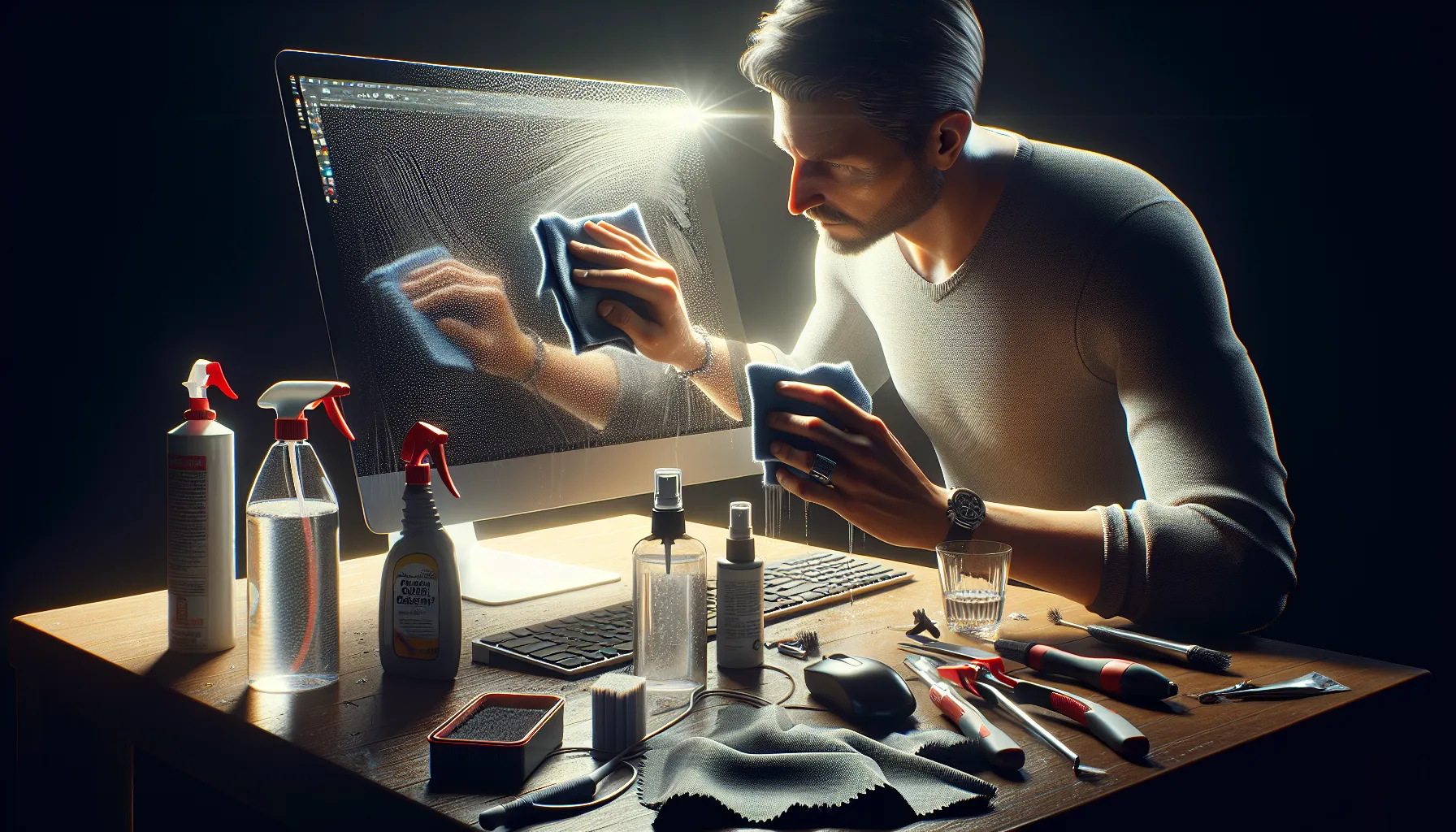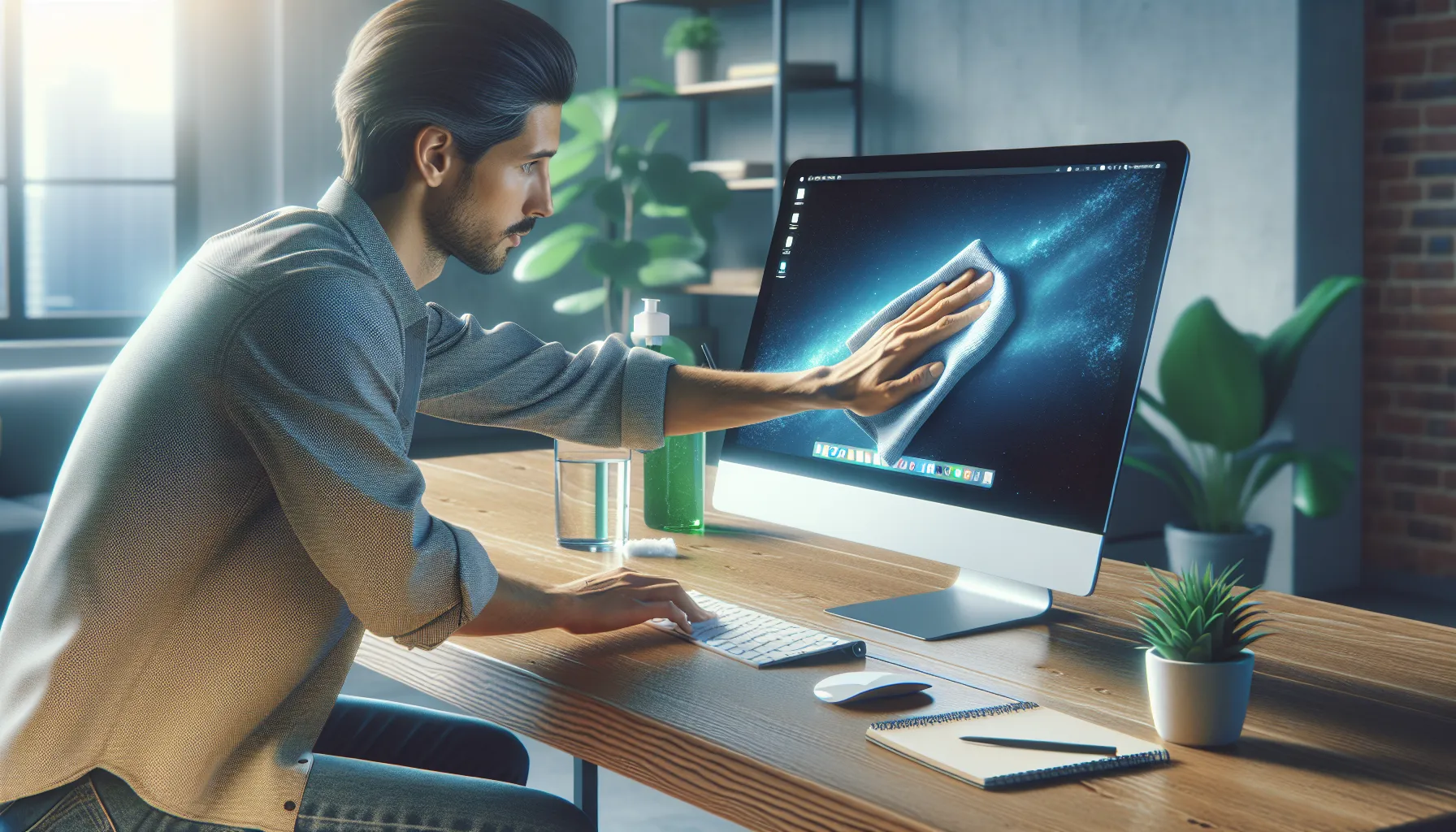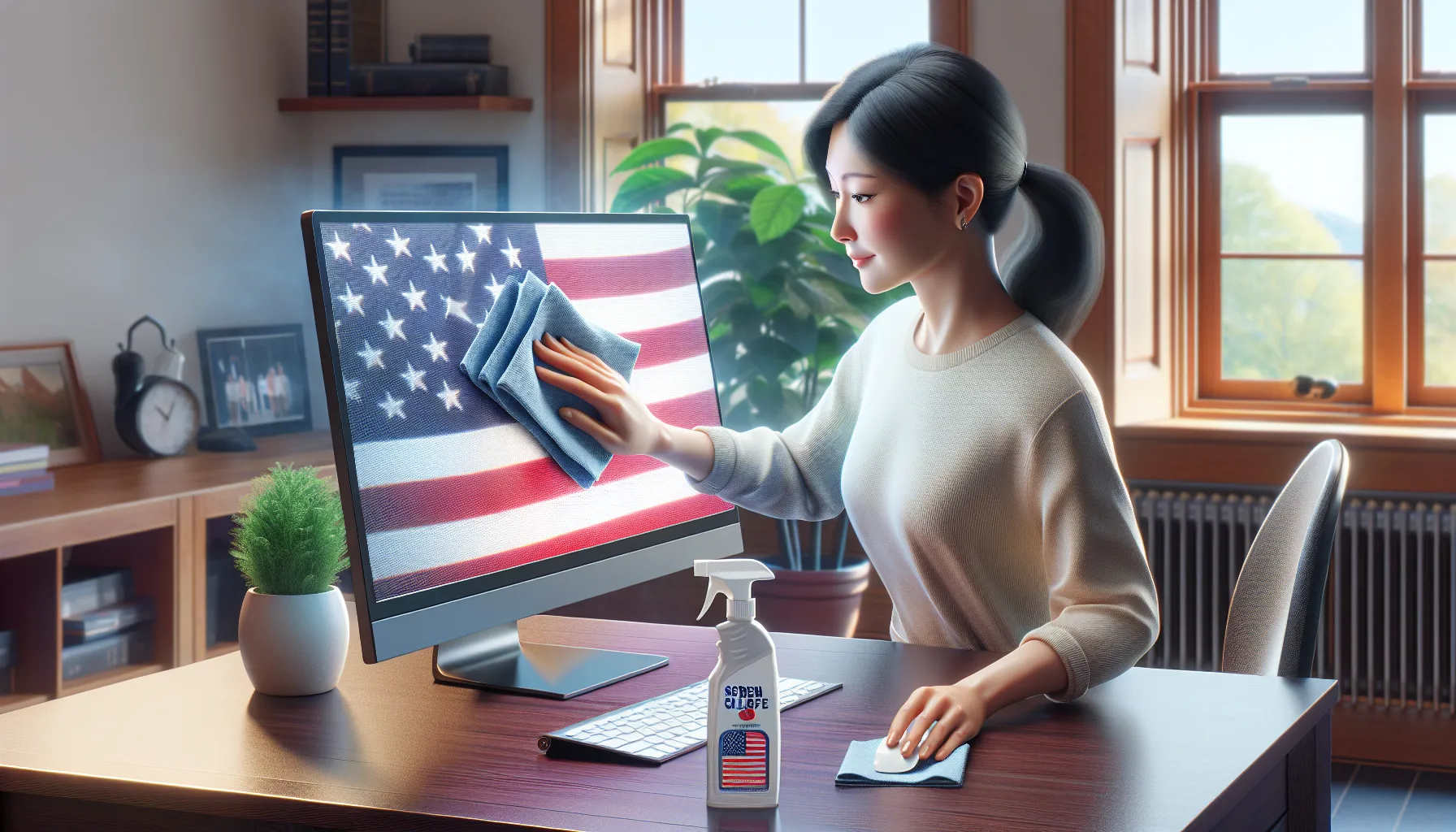Key Takeaways
- Regularly cleaning your computer screen enhances visuals, reduces eye strain, and extends the lifespan of your device.
- Use appropriate tools, such as a microfiber cloth, distilled water, and screen-safe cleaning solutions, to avoid damaging the screen.
- Always power off and unplug your computer before cleaning to ensure safety and prevent static buildup.
- Avoid common mistakes like using abrasive materials, applying cleaner directly to the screen, or pressing too hard while wiping.
- Maintain a clean screen by cleaning it weekly, avoiding touching it with dirty hands, and keeping the workspace dust-free.
- Follow the manufacturer’s care instructions to preserve the screen’s coating and overall performance.
I can’t count how many times I’ve sat down to work or watch something on my computer, only to be distracted by smudges, fingerprints, or dust on the screen. It’s amazing how quickly screens can get dirty, and let’s be honest, it’s not exactly pleasant to look at. A clean screen not only looks better but also makes everything sharper and easier on the eyes.
Importance Of Cleaning Your Computer Screen
Keeping my computer screen clean ensures clearer visuals and enhances the quality of my viewing experience. Dust and smudges can distort colors, reduce brightness, and create distractions, making it harder to focus on tasks or enjoy media.
A clean screen reduces eye strain, particularly when working for extended periods. Dirty screens often cause me to adjust my viewing angle or squint, which can lead to fatigue or discomfort.
Routine cleaning also helps my device last longer. Dust and particles that accumulate on screens can gradually affect the coating, damaging its surface over time. Regular maintenance protects the screen’s integrity and keeps it looking new.
By cleaning my screen, I maintain my workspace’s professional and organized appearance. A spotless monitor makes a positive impression during video calls or presentations.
Tools And Materials Needed

Cleaning a computer screen requires the right tools and materials to ensure effective yet safe results.
Recommended Cleaning Solutions
I always choose non-abrasive and screen-safe solutions. Distilled water works best for general cleaning. For tougher grime, a 50/50 mix of distilled water and isopropyl alcohol (70% concentration or lower) ensures safety without harming the screen. Pre-packaged screen cleaning sprays labeled as safe for electronics are also effective.
Essential Cleaning Tools
I rely on a microfiber cloth for streak-free cleaning. Soft and lint-free, it prevents scratches. Compressed air cans clear dust from screen edges and difficult-to-reach areas. Cotton swabs dipped lightly in distilled water help clean small crevices and corners. In addition, a soft brush efficiently removes surface dust before applying cleaning solutions.
Step-By-Step Guide To Clean A Computer Screen

Keeping a computer screen clean enhances the device’s performance and protects it from potential damage. Follow these steps to ensure safe and effective cleaning.
Preparing The Screen For Cleaning
I power off the computer and unplug it to avoid electrical risks and reduce static buildup. This step ensures safety and prevents accidental screen damage. I inspect the screen for loose dust, using a soft brush or compressed air to remove particles from the edges and crevices.
Applying The Cleaning Solution
I use a pre-mixed screen-safe cleaner or mix distilled water and isopropyl alcohol in a 1:1 ratio for tough grime. I lightly dampen a microfiber cloth with the solution, ensuring it’s not dripping to prevent liquid from seeping into the screen. Applying the cleaner directly to the screen is avoided.
Proper Wiping Techniques
I gently wipe the screen using the dampened microfiber cloth. Small, circular motions help minimize streaking. I avoid excessive pressure, focusing on areas with visible smudges or fingerprints. For hard-to-reach corners, I use a cotton swab dampened with the same solution. After wiping, I let the screen air-dry before reconnecting and powering on the device.
Common Mistakes To Avoid

Skipping the power-off step exposes the device to potential damage. Always turn off and unplug the computer before cleaning to prevent electrical risks and static buildup.
Using abrasive materials like paper towels or regular cloths can scratch the screen. Only use a microfiber cloth or other screen-safe materials for cleaning.
Applying cleaner directly onto the screen can cause liquid to seep into the device. Instead, spray the cleaning solution onto the microfiber cloth first and then gently wipe the screen.
Pressing too hard while wiping risks permanent screen damage. Use light pressure and smooth, circular motions for safe cleaning.
Ignoring manufacturer instructions could lead to the use of harmful products. Check the user manual for recommended cleaning practices and safe materials.
Using strong chemicals such as ammonia, acetone, or window cleaners can deteriorate screen coatings. Stick to distilled water or screen-safe cleaning solutions specifically designed for electronics.
Tips For Maintaining A Clean Screen
- Clean Regularly
I clean my screen weekly to prevent dust, smudges, and fingerprints from building up. Regular maintenance keeps the cleaning process quick and easy.
- Use Screen Covers
I recommend using a screen protector or cover. These protect against scratches, reduce debris accumulation, and simplify cleaning.
- Keep Hands Clean
I avoid touching the screen with dirty or oily hands. Clean hands help reduce fingerprints and smudging.
- Avoid Eating Near Your Computer
I minimize food crumbs and spills by keeping meals and snacks away from my workspace.
- Store in a Dust-Free Environment
I place my device in a low-dust area when not in use. This prevents dust from settling on the screen and reduces cleaning frequency.
- Use Proper Tools for Quick Dust Removal
I keep a soft microfiber cloth nearby to address minor dust particles or smudges immediately before they worsen.
- Check Ventilation
I ensure my workspace is well-ventilated and free of excessive humidity or airborne particles that can settle on the screen.
- Follow Manufacturer Care Instructions
I always review and stick to the screen care guidelines provided by the manufacturer to maintain its finish and performance.
Conclusion
Keeping your computer screen clean doesn’t have to be a daunting task. With the right tools, techniques, and a little bit of care, you can maintain a spotless screen that not only looks great but also enhances your overall experience. A clean screen goes a long way in protecting your device and creating a more enjoyable and professional workspace.
By incorporating regular cleaning into your routine and avoiding common mistakes, you’ll ensure your screen stays in top condition for years to come. A little effort truly makes a big difference!
Frequently Asked Questions
How often should I clean my computer screen?
You should clean your computer screen at least once a week to prevent dust, fingerprints, and smudges from building up. Regular maintenance ensures optimal clarity and prolongs the screen’s lifespan.
What tools are best for cleaning a computer screen?
Use a microfiber cloth, screen-safe cleaning solutions like distilled water or a 50/50 mix of distilled water and isopropyl alcohol, compressed air cans, cotton swabs, and a soft brush for safe and effective cleaning.
Can I spray cleaner directly on my computer screen?
No, you should never spray cleaner directly on the screen. Always apply the cleaning solution to a microfiber cloth first to prevent liquid from seeping into the device and causing damage.
Why should I avoid using paper towels to clean my screen?
Paper towels are abrasive and can scratch your screen. Stick to a microfiber cloth for a streak-free and scratch-free cleaning experience.
Are household cleaners safe for computer screens?
No, household cleaners, such as ammonia or window cleaners, can damage your screen’s protective coating. Use screen-safe cleaning solutions designed specifically for electronics.
What should I do before cleaning my computer screen?
Power off and unplug your device to reduce electrical risks and static buildup. This ensures your safety and protects the screen during cleaning.
How can I prevent screen smudges and fingerprints?
Keep your hands clean, avoid eating near your computer, and consider using a screen protector. These precautions help minimize marks and reduce the need for frequent cleaning.
What is the correct technique for wiping the screen?
Use a lightly damp microfiber cloth and wipe the screen in small circular motions. This minimizes streaks and ensures even cleaning without applying excessive pressure.
Can strong chemicals damage a computer screen?
Yes, strong chemicals like ammonia or alcohol-based window cleaners can deteriorate the screen’s coating. Always use distilled water or screen-safe solutions.
How can I maintain a clean screen in the long term?
Clean your screen weekly, use a screen protector, keep your workspace dust-free, and avoid touching the screen with dirty hands. Regular upkeep ensures durability and better performance.

